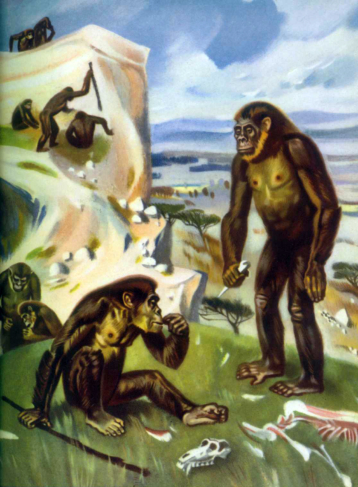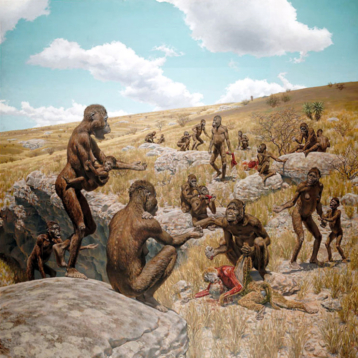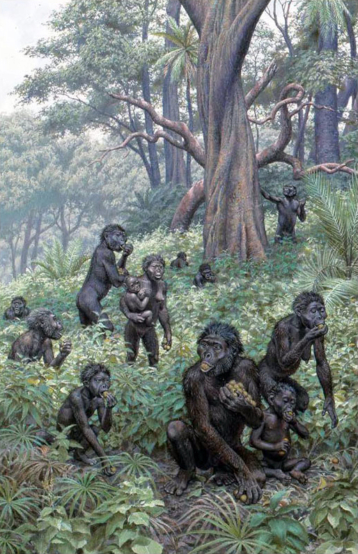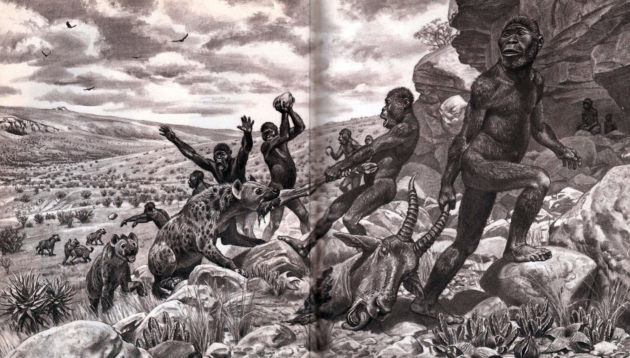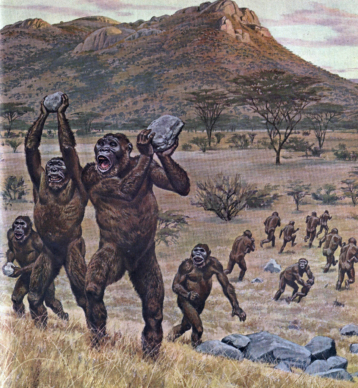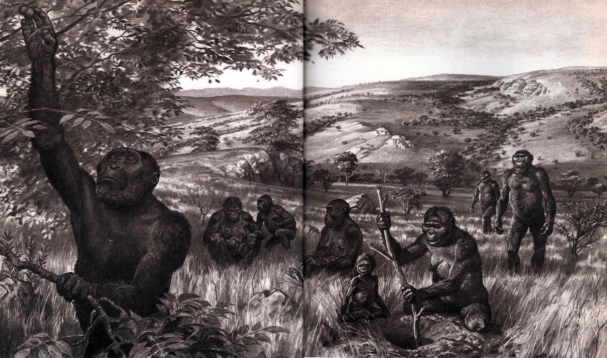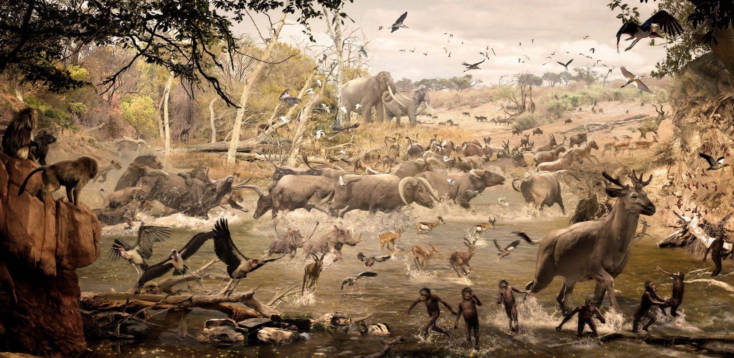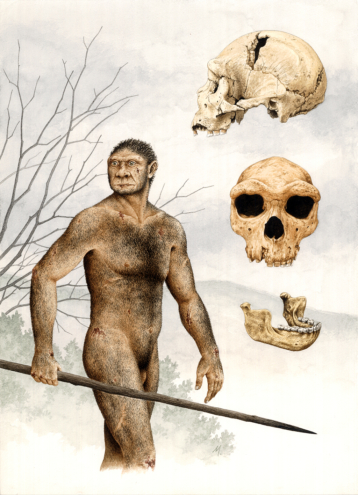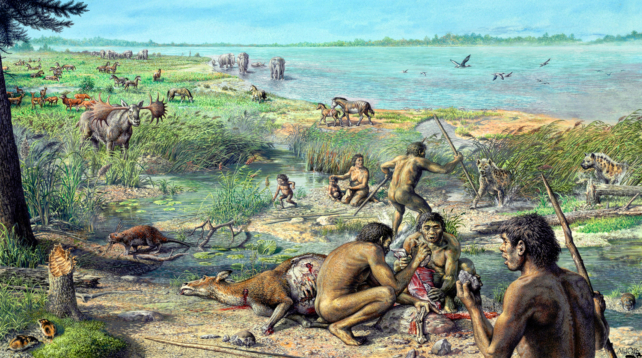Lower Paleolithic reconstructions
From some 2.6 million to 300 000 years before present. The dating of the period beginning is rather floating. A new discovery may change it a great deal. It was too much time ago, fossils, artifacts of the period are more like scarce and their interpretations often seem to be confusing.
The World is populated by the ancestors of humans, orangutans, gorillas, chimpanzees, bonobos. In a way, the split among these may be considered to be the mark of the true beginning of the Lower Paleolithic as a part of human history. It is then that the participants first stepped forward. Presumable early tools are not exemplary enough. Even if being eponymous. It is not exactly clear if they were real tools. And using objects is not an exclusive characteristic of humanity anyway. The use of objects was a purely instinctive practice for many and many hundreds of years. It did not have any principle difference from other animal activities and did not make Homos of Lower and most probably of Middle Paleolithic human in the proper sense of the word.
Australopithecus and Homo habilis are typical for the earlier part. Later various subspecies of Homo erectus, Homo heidelbergensis, coexisting much of the period.
Occasional use of fire. Later possibly even control of fire. First tools - true they initially were or not, they started the process. Possibly the first spears. If use of sticks by chimpanzees in spear-like fashion is the remnant feature from the time of formation, it may be the common heritage of humans and chimpanzees. Then it hints human ancestors used spears perhaps five to seven million years ago - at the time of divergence between genera of hominini. On the other hand, there are concepts treating them to be just levers facilitating disjointing of dead animals carcasses they scavenged on.
As with Neanderthals, artists and scientists of the past mostly tended to conceive and depict the first Homos noticeably less human, than it is common today. Lack of findings, ideas of the time and general public expectations often made up an image more of an advanced ape, than a human in any way. Later the attitude changed, sometimes switching to the opposite extremes. So today, for example, Homo heidelbergensis looks very much human in artistic reconstructions. And not just look: some theories suggest Homo heidelbergensis and even Homo erectus to have some traits previously attributed only to modern humans.
